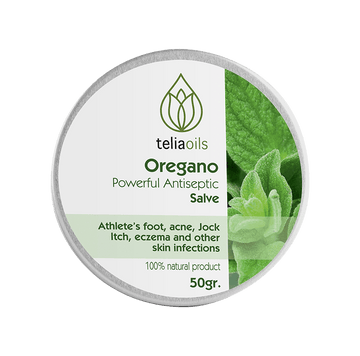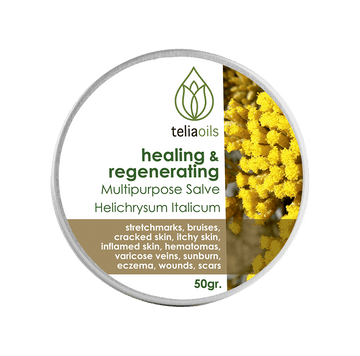Exploring Devil's Claw (Harpagophytum): Nature's Answer to Pain and Inflammation
by Dimitris Zikos on Oct 14, 2024

Devil’s Claw, scientifically known as Harpagophytum, is a plant native to the deserts of Southern Africa, particularly Namibia, South Africa, and Botswana. Renowned for its distinctive hook-like fruit, which gives it the common name “Devil’s Claw,” this herb has been used in traditional African medicine for centuries. In this essay, we delve into the history, benefits, and uses of Devil's Claw, with a special focus on the oil extracted from its roots, known for its potent anti-inflammatory and pain-relieving properties.
Historical and Traditional Uses
Traditional African Medicine
Harpagophytum, also called grapple plant, wood spider, and most commonly devil's claw has a long history of use among indigenous peoples of Southern Africa for treating a variety of ailments. Traditionally, it has been used to alleviate pain, treat digestive disorders, and even to heal wounds and sores. The roots are typically dried and then ground into a powder or made into a tincture or tea.
Therapeutic Properties of Devil’s Claw
Anti-inflammatory and Analgesic Benefits
The primary active compound in Devil’s Claw is harpagoside, found in the plant’s tuberous roots. Harpagoside has been scientifically studied and proven to have significant anti-inflammatory and analgesic properties. These characteristics make Devil’s Claw particularly effective in treating conditions like arthritis, rheumatism, and lower back pain.
Devil's Claw Oil
Extraction and Composition
While not as commonly found as the powdered form of the roots, Devil’s Claw oil can be extracted through a process of maceration or cold pressing of the dried roots. This oil concentrates the plant’s active compounds, providing a potent formula that can be used topically to relieve joint pain and inflammation.
Uses in Modern Medicine
Devil’s Claw oil is primarily used in topical applications for the relief of pain and swelling associated with osteoarthritis and other musculoskeletal disorders. Its ability to reduce pain and improve mobility makes it a favored component in creams and ointments aimed at pain relief.
Potential Side Effects
While Devil’s Claw is generally considered safe for most people, it can cause side effects in some cases. These may include digestive disturbances and allergic reactions, particularly when taken orally. For topical applications such as oils and creams, it is generally well tolerated, though skin irritation can occur, especially in individuals with sensitive skin.
Uses in Holistic and Alternative Therapies
Aromatherapy and Massage
Devil’s Claw oil can be used in aromatherapy and as a massage oil to enhance its analgesic effects. When massaged into the skin, it not only helps alleviate pain but also improves circulation to the affected areas, promoting healing and comfort.
Integration with Other Treatments
In holistic health practices, Devil’s Claw oil is often combined with other anti-inflammatory and pain-relieving essential oils to enhance its effects. It is used alongside lavender, peppermint, and eucalyptus oils to provide comprehensive pain relief and relaxation.
Devil’s Claw stands out as a powerful natural remedy with proven benefits for pain relief and inflammation reduction. The oil extracted from its roots offers a convenient and effective way to harness the plant’s therapeutic properties through topical application. With its growing popularity in natural health circles, Devil’s Claw continues to be a vital component of herbal medicine, providing relief to those suffering from chronic pain and inflammation, and embodying the healing power of nature in every drop.












